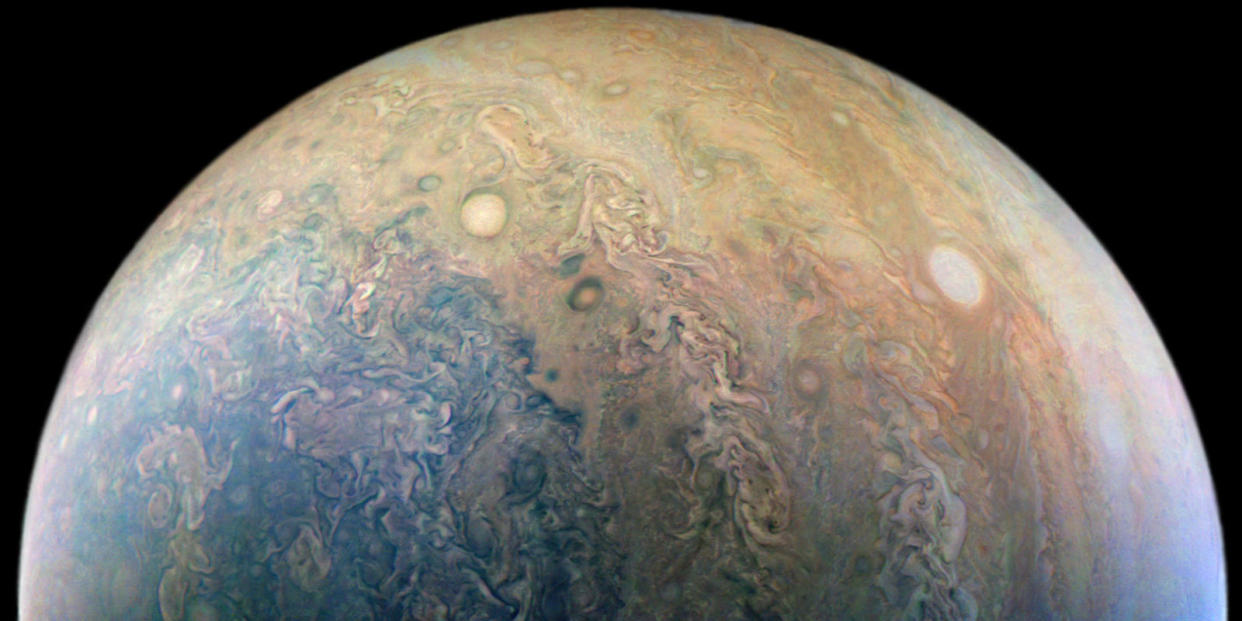The First Results from the Juno Mission Reveal Surprises at Jupiter

NASA's Juno spacecraft has been in orbit around Jupiter for nearly a year, and we're finally getting a first look at some of the discoveries the probe has been making. The first data from the Juno probe was presented at the annual conference of the European Geosciences Union. The new findings from Juno are already challenging our understanding of the largest planet in the solar system.
Previous observations of Jupiter from the Galileo spacecraft suggested that Jupiter was made mostly of a uniform interior with a solid core of metallic hydrogen. New gravitational data from Juno call that into question. It now appears that Jupiter's internal layers are not uniform at all, but instead regularly mix together.
Another important discovery is that Jupiter's magnetic field is actually much more powerful than previously believed. Jupiter's magnetic field was already known as the largest structure in the solar system, stretching more than 4 million miles in multiple directions. It was thought to be 10 to 20 times as powerful as Earth's magnetic field.
But Juno's measurements seem to indicate that Jupiter's magnetic field is even stronger than that. Results from the spacecraft suggest that the field might be almost twice as strong as previously believed. In addition, the field appears to be uneven in places, which means that unlike the Earth, Jupiter's magnetic field is generated closer to the surface rather than deep near the core.
All of this new information comes from only Juno's first five orbits of Jupiter. The craft has at least seven more orbits before the budgeted end of mission in July 2018, but depending on how the spacecraft is doing, Juno could operate for longer than that. There's certainly still plenty more to discover about Jupiter.
Source: New Scientist
You Might Also Like

